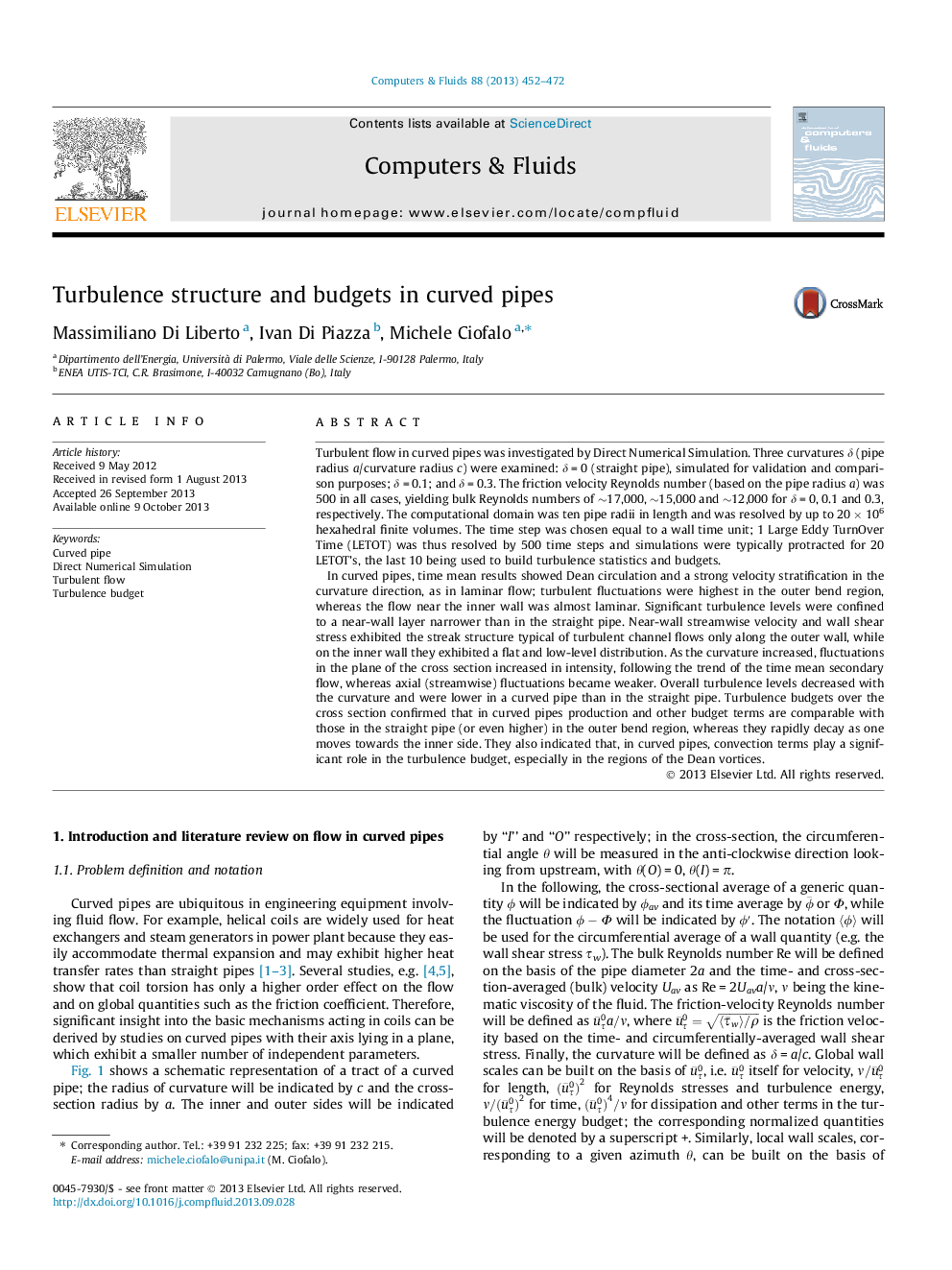| Article ID | Journal | Published Year | Pages | File Type |
|---|---|---|---|---|
| 7157326 | Computers & Fluids | 2013 | 21 Pages |
Abstract
In curved pipes, time mean results showed Dean circulation and a strong velocity stratification in the curvature direction, as in laminar flow; turbulent fluctuations were highest in the outer bend region, whereas the flow near the inner wall was almost laminar. Significant turbulence levels were confined to a near-wall layer narrower than in the straight pipe. Near-wall streamwise velocity and wall shear stress exhibited the streak structure typical of turbulent channel flows only along the outer wall, while on the inner wall they exhibited a flat and low-level distribution. As the curvature increased, fluctuations in the plane of the cross section increased in intensity, following the trend of the time mean secondary flow, whereas axial (streamwise) fluctuations became weaker. Overall turbulence levels decreased with the curvature and were lower in a curved pipe than in the straight pipe. Turbulence budgets over the cross section confirmed that in curved pipes production and other budget terms are comparable with those in the straight pipe (or even higher) in the outer bend region, whereas they rapidly decay as one moves towards the inner side. They also indicated that, in curved pipes, convection terms play a significant role in the turbulence budget, especially in the regions of the Dean vortices.
Related Topics
Physical Sciences and Engineering
Engineering
Computational Mechanics
Authors
Massimiliano Di Liberto, Ivan Di Piazza, Michele Ciofalo,
